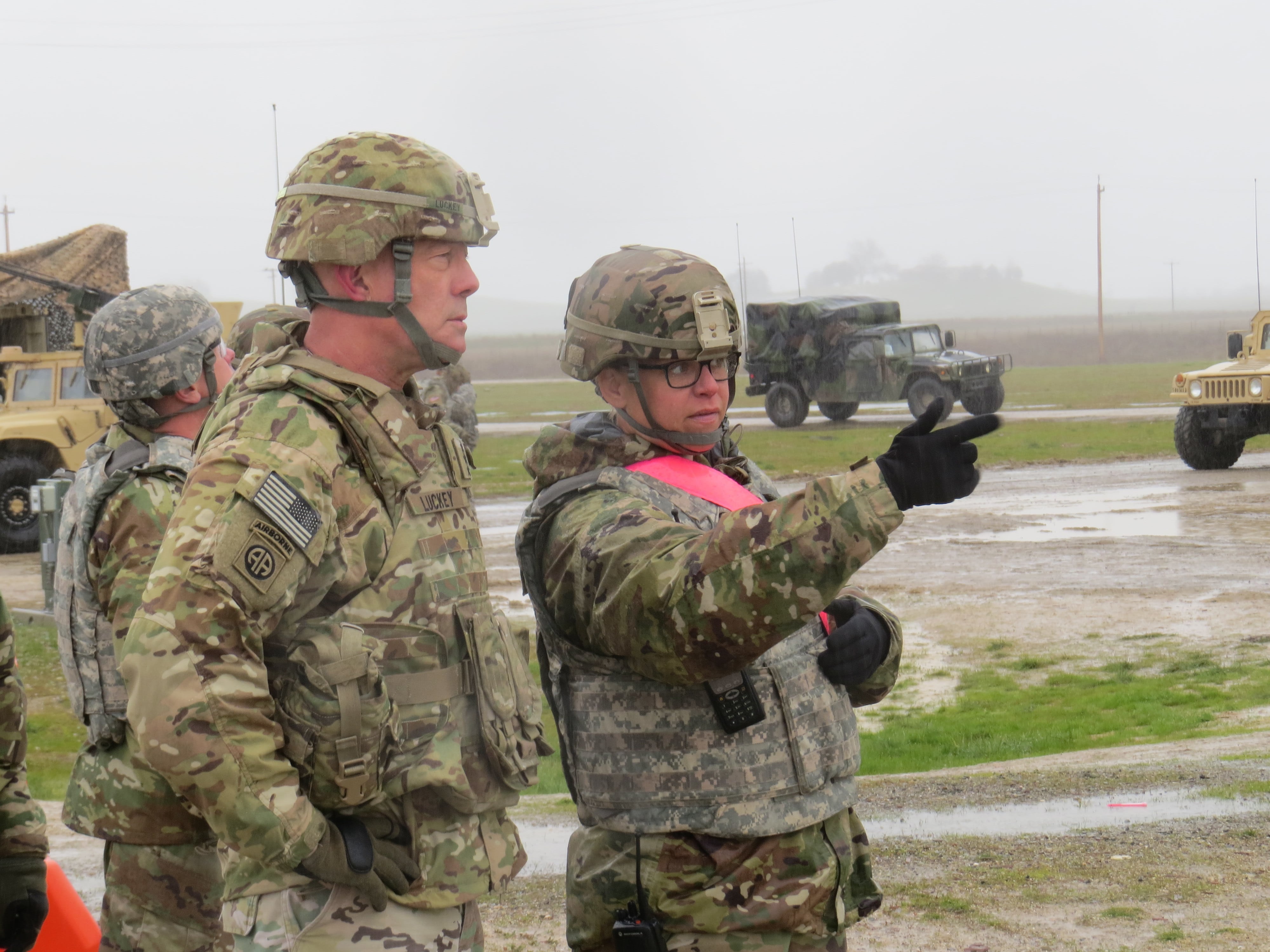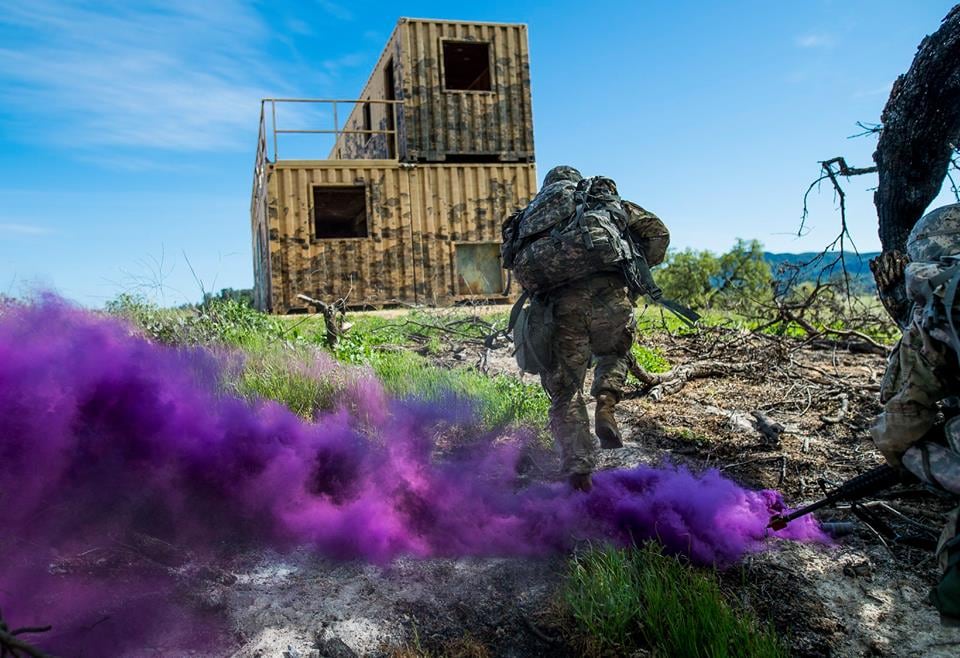A recent report takes a detailed look at how the Army Guard and Reserve can contribute best in the early days of major combat operations and the answer is not pushing tanks, helicopters and infantry into the fight.
Instead, small enabler units, especially those with specialties that are more prevalent in the reserve component than the active, should be prioritized for funding, training and readiness over larger reserve brigade combat teams or combat aviation brigades.
The RAND Corporation report titled, “A Throughput-Based Analysis of Army Active Component/Reserve Component Mix for Major Contingency Surge Operations,” published May 8, lays out the mobilization capacity of the Army, and how that capacity limits how quickly the reserves can be funneled into combat.
RELATED

And, report authors wrote, it’s a balancing act.
“RAND examined the fundamental tension between two timelines: the date that forces are needed, and the time it takes RC units to be mobilized and made ready,” authors wrote.
Depending on how the mix of reserve and active forces are balanced, the initial contribution of the reserves varies wildly.
The researchers analyzed the need for an estimated 14 BCTs and support, totaling about 176,000 soldiers needed in the first 20 weeks of combat.
The most optimistic analysis showed that if all went nearly perfectly, the reserves could contribute as many as 140,000 soldiers, or about 80 percent, of the total.
But, more pessimistic analysis showed the reserve contribution would be about 25,000 soldiers, or about 14 percent of the total.
The baseline fell in the middle, with the reserves delivering 45,000 soldiers, or about a quarter of the total force.
The report’s findings somewhat echo recent comments made by Army Reserve commander Lt. Gen. Charles Luckey, who said in April at an Association of the U.S. Army event that the reserves need prioritization to bring their distinct capabilities to major combat ops.
“We don’t fight tonight,” Luckey said. “It’s fight tonight after tomorrow night.”
Reserve activation force-wide would lack a running start currently unless the Pentagon planners decide how, when and where to mobilize critical Reserve enablers to support active Army operations in major combat, he said.
Though the separate RAND report authors wrote that they were not making any force structure recommendations and instead focused on prioritizing training and funding, Luckey didn’t hesitate to put restructuring in the mix.
“If we can’t get some time to get ahead of some of these things then we need to look to rebalance the force structure of the Army,” Luckey said. “Because some of the things that are in the (Reserve) probably shouldn’t be in the (Reserve) if I don’t have time to generate that capability prior to an engagement.”
And bringing the reserves into the mix is more than simply adding more soldiers, the reserves have a long list of unique assets such as chemical, biological, radiological and nuclear response units, seaport operations and military police. Three quarters of those types of units are only in the reserves and others have no active Army equivalent.
At the AUSA Sustainment conference Wednesday, Maj. Gen. Steven Ainsworth, commander of the 377th Theater Sustainment Command for the Army Reserve, showed a more detailed breakdown of the sustainment portion of that active-reserve mix.
The following units heavily reside in the reserves: 96 percent of the water companies; 86 percent of truck companies; 59 percent of ammunition companies; 36 percent of watercraft companies.
The key factors to mobilization are strategic lift, transportation and shipping capacity for personnel and equipment, and the time it takes for mobilization and pre-deployment training to be conducted.
To speed up current timelines, authors noted earlier mobilization decisions by political leaders were “by far the largest effect on the ability of the (reserve component) units to mobilize.
“Beginning mobilization eight weeks before the start of execution of the force flow can come close to doubling the number of both RC units and RC soldiers ready and able to meet the demands of a major war,” according to the report.
But, authors were quick to admit, there’s not always much warning before fighting breaks out.
Other ways to shorten the deployment time were to keep more training options in states where those units are headquartered and to shorten the post-mobilization training.
One way to shorten that would be to tailor training to the specific mission set and geographic area rather than taking on a top to bottom holistic training model.
And trying to do either of those methods with large formations, such as BCTs or CABs, not only takes longer and is less effective for what the larger Army needs, it also crowds out resources to get the smaller, more needed, units into the fight.
“Small, relatively quicker-to-train units, in contrast, can move through the mobilization system fairly quickly,” according to the report.
Authors noted that “only a few (if any)” reserve BCTs and CABs can be mobilized and made ready in time run side by side with active counterparts.
A key example shown was the training capacity, there are multiple locations across the Army’s homeland bases where small units can go to do their training and move on to theater while there are only a handful of spots where the bigger reserve formations can go.
“Only Camp Shelby and Fort Bliss have the infrastructure capable of supporting BCTs, while CABs can only train at Fort Hood,” according to the report.
Only one of each with their subcomponents can train at those bases at a time. And, no non-BCT or non-CAB units can train while they’re there.
The authors wrote that their study suggested “a bias toward focusing on the training and contingency sourcing of more readily deployable units in the RC will greatly increase the RC’s ability to contribute in early phases of a future deployment.”
The combat support and combat service support functions and units of the reserve would be the best focus for reserve priorities in the early days of major combat. The larger brigades could contribute later in the fight when stabilization and relief of the active counterparts is needed.
But right now, the reserves would have problems putting even those small enabler units into the early fight if political leadership doesn’t pull the trigger on mobilization at the earliest opportunity.
That’s because without early mobilization, even small reserve units would have trouble deploying in the first 30 to 60 days, according to the report.
“This suggests that a narrow and definable section of the RC should be kept at high readiness, which is likely more feasible than sustaining high readiness across a large cross-section of the RC,” according to the report.
Authors recommended recreating programs from the 1970s and 1980s to meet this challenge.
The CAPSTONE and WARTRACE programs, respectively, were aimed at better focusing reserve units on their likely wartime missions. CAPSTONE sought to align all Army reserve component units under “gaining-commands,” the commands that would use the reserve units in wartime.
The commands would give the reserve units “detailed information concerning their wartime mission.”
By having that info on standby, the reserve units could better conduct planning and ongoing training.
The WARTRACE program goes back to earlier periods at the end of the Vietnam War and sought to align reserve combat battalions and brigades with their associated active component units.
Todd South has written about crime, courts, government and the military for multiple publications since 2004 and was named a 2014 Pulitzer finalist for a co-written project on witness intimidation. Todd is a Marine veteran of the Iraq War.




